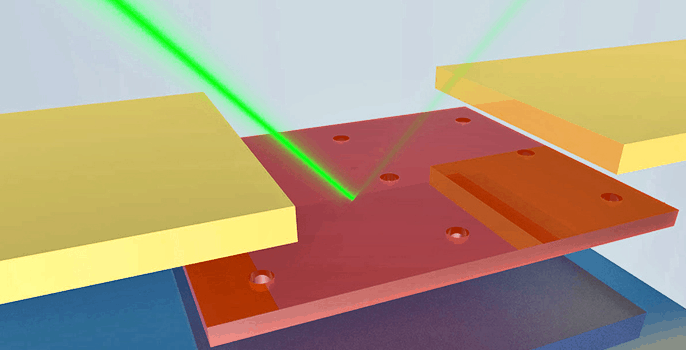Scientists across America have developed a cutting edge nano light detector which is able to convert light to energy. They’ve achieved this by combining a unique method of fabrication (nanocavities) and reflection via light-trapping structures. This tech could have some amazing ramifications for solar panel technology as it means we could use a very thin material to do the same job as what is currently a quite bulky and obtrusive way of harvesting solar power.
Nano Light Detector

Scientists have been working in labs worldwide with the aim of reducing the size and weight of a solar panel – there have been many recent developments such as the creation of perovskite solar cells, ‘smart’ solar windows, flexible screen printed solar panels, and so on. There has also been a lot of research into nanoscale tech – basically shrinking the materials to a smaller size, with the goal of making the whole process thinner and lighter.
Qiaoqiang Gan from the University of Buffalo (and one of the paper’s lead authors – click here to read the news release on the University of Buffalo website) was quoted as saying “We’ve created an exceptionally small and extraordinarily powerful device that converts light into energy.” Gan said the potential for the technology is exciting as a nano light detector could “produce everything from more efficient solar panels to more powerful optical fibers.” According to the University of Buffalo website, nanocavities are made up of an orderly series of tiny, interconnected molecules that essentially reflect, or circulate, light.
Zhenqiang (Jack) Ma from the University of Wisconsin-Madison, and also one of the lead authors, has been working on developing nanocavities which can increase the light that materials like germanium (thin semiconductors) can absorb. So the new device uses nanocavities in between a thin layer of germanium and a bottom of reflective silver. According to Ma, by using this nanocavity technique, “the photons are ‘recycled’ so light absorption is substantially increased—even in very thin layers of material.” That means what we currently think of as a solar panel could be shrunk to a fraction of its current size whilst absorbing the same (or even more) solar energy.
If you’re interested in the hard science behind it, Science Mag has a link to the research article (you can read it by clicking here) – which is titled “Single-crystalline germanium nanomembrane photodetectors on foreign nanocavities.”

